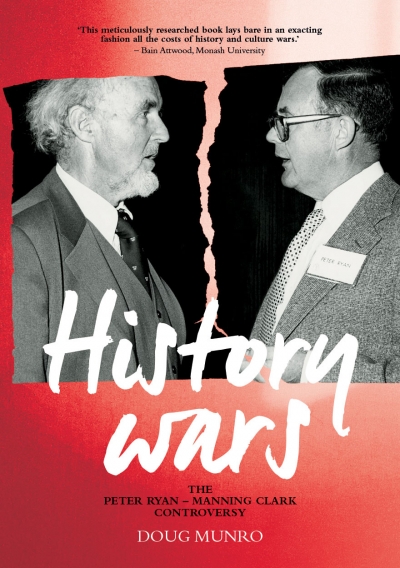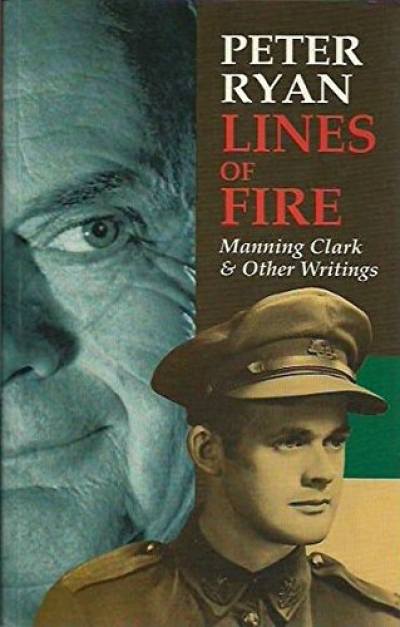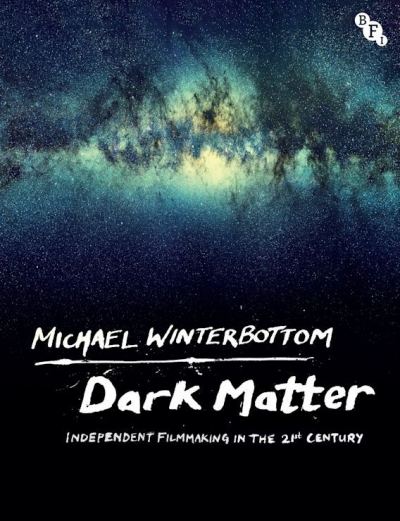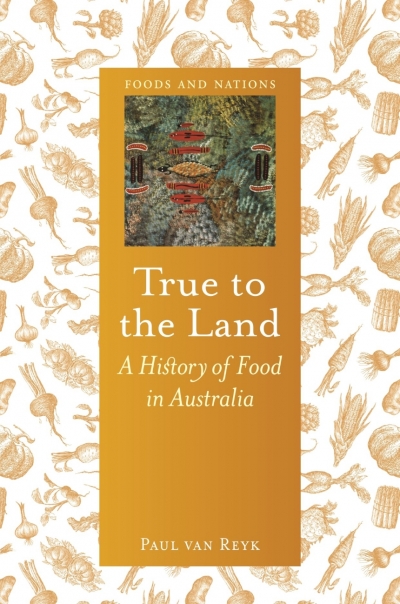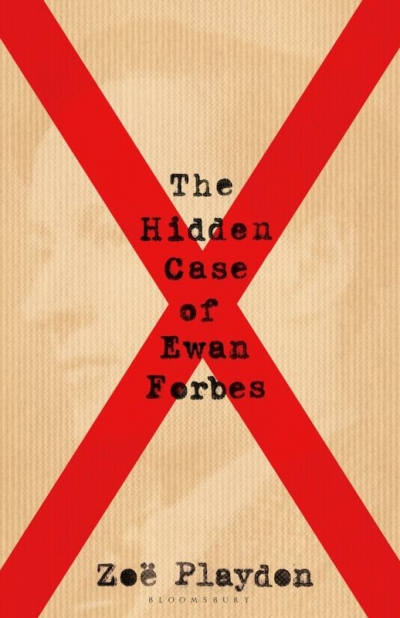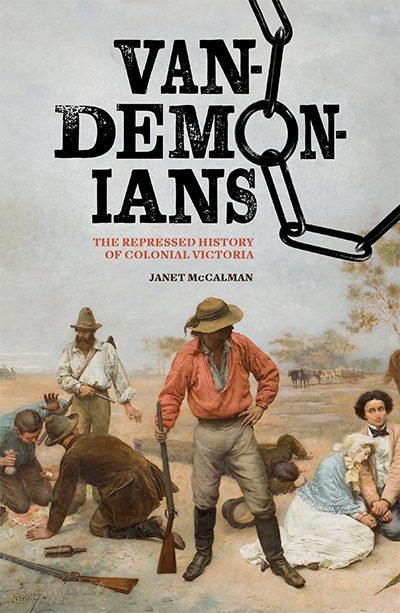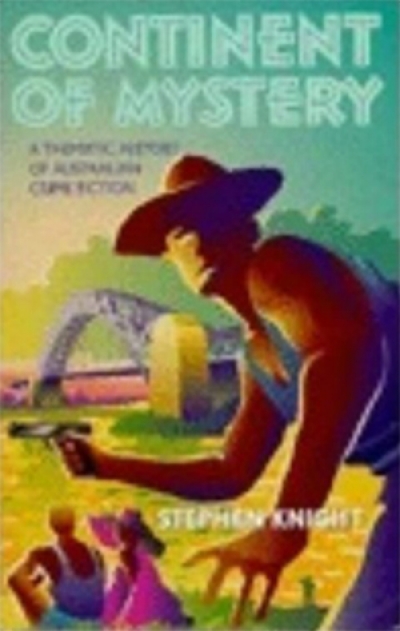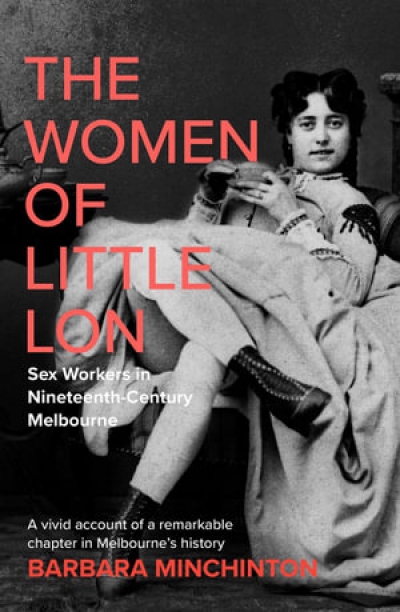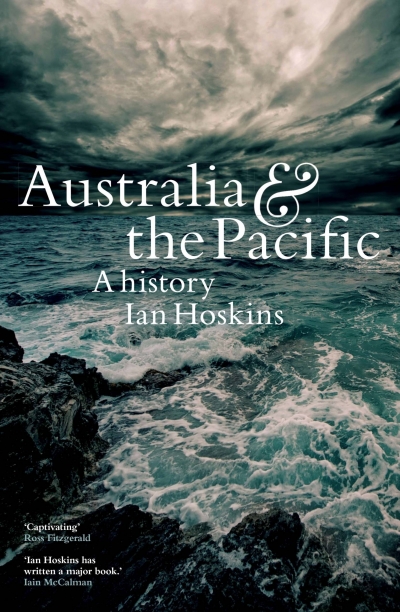History
History Wars: The Peter Ryan–Manning Clark controversy by Doug Munro
It was one of the most notorious episodes in the annals of Australian publishing. In September 1993, writing in Quadrant, Peter Ryan, the former director of Melbourne University Press (1962–87), publicly disowned Manning Clark’s six-volume A History of Australia. Clark had been dead for barely sixteen months. For scandalous copy and gossip-laden controversy, there was nothing to equal it, particularly when Ryan’s bombshell was dropped into a culture that was already polarised after more than a decade of the History Wars.
... (read more)Lines of Fire: Manning Clark and Other Writings by Peter Ryan
This collection of Peter Ryan’s writings, Lines of Fire, is no grab-bag of oddments. The pieces included here are given an impressive unity by the author’s imposition of his presence, by his trenchancy, elegance of expression, a desire to honour the men and women of his younger days and to excoriate a present Australia in which too many people wallow in ‘an unwholesome masochistic guilt’. The finely designed cover shows a wry, ageing, wrinkled Ryan smiling benignly over his own shoulder, or rather that of his younger self, in uniform, in late teenage, during the Second World War. What happened in between is richly revealed in the elements of Lines of Fire.
... (read more)While there are several biographies of Ivan Turgenev, and one or two specialised studies of his works available in English, there is only one comprehensive attempt at interpretation and criticism –Richard Freeborn’s Turgenev: The novelist’s novelist. The A.N.U. Press’s publication of Robert Dessaix’s doctoral dissertation is a valuable addition to a scanty field, especially as there is very little overlap between the two critical works. This is all the more surprising when one realizes that both are more heavily weighted in the pan of philosophical exegesis than in that of strictly defined literary criticism. Freeborn’s book contains a chapter on style, which Dessaix’s does not, but both authors are mainly concerned to study the major novels in the light of differing but related perceptions of Turgenev’s spiritual development.
... (read more)Dark Matter: Independent filmmaking in the 21st century by Michael Winterbottom
Stanley Kubrick’s Napoleon is perhaps the best-known film never made. But what about others that never happened? What might a closer look at these reveal about the state of filmmaking? Such unmade films constitute the ‘dark matter’ of British director Michael Winterbottom’s book Dark Matter: Independent filmmaking in the 21st century. The invisible dark matter of the cosmos shapes our universe; without it many galaxies would fly apart. For Winterbottom, an examination of cinematic dark matter ‘might help to explain the wider landscape of British independent cinema’ this century.
... (read more)True to the Land: A history of food in Australia by Paul van Reyk
‘The past only comes into being from the vantage point of the future,’ the novelist Michelle de Kretser told an interviewer recently. History is written in a present that is inexorably moving forward, while historians explore as far back as their interests take them. All the while they are backstitching, a step forward, a half step back. Post hoc ergo propter hoc?
... (read more)In winter 2019, Victoria’s Labor government tabled legislation that would make it easier for trans people to correct the sex marker on their birth certificate. Previously, trans people were required to have surgery on their reproductive organs before they could amend this foundational legal document. This requirement caused significant problems for the many trans people who don’t want or cannot afford surgery. Unable to correct their birth certificate, trans people often lived with a mismatch between their gender presentation and legal identity, a situation which forced them to disclose their transgender status and expose themselves to harassment and discrimination – or worse.
... (read more)Vandemonians: The repressed history of colonial Victoria by Janet McCalman
Though a generation has grown up with online technology, we are only just starting to grasp what it means for our understanding of humanity. As a historian, I’m surprised to find that I can now trace the emotional and intellectual experience of individuals, through long periods of their lives, with a new kind of completeness. Fragments of detail from all over the place, gathered with ease, can be used to build up inter-connected portraits of real depth. A new inwardness, a richer kind of subjectivity, takes shape as a result.
... (read more)Continent of Mystery: A Thematic History of Australian Crime Fiction by Stephen Knight
Continent of Mystery, subtitled ‘A thematic history of Australian crime fiction’ is, in the most simplistic terms, a daunting and inspiring book. My Australian crime fiction, mystery and detective fiction magazine, Mean Streets, was launched by Knight towards the end of 1990, not long before his move to the United Kingdom. For better or worse upon Knight’s departure I assumed, or at least so I was told, the mantle of Australia’s expert on crime fiction. I always perceived that observation as a compliment but having read Continent of Mystery with a sense of awe I can only say that I’m not sure I’m even fit to sit at Knight’s feet when it comes to local fiction with criminality at its core.
... (read more)The Women of Little Lon: Sex workers in nineteenth-century Melbourne by Barbara Minchinton
We routinely think of the past as a subtext of the present, but in The Women of Little Lon Barbara Minchinton flips this around. She aims not only to ‘dismantle the myths and counter misinformation and deliberate distortions’ about sex workers in nineteenth-century Melbourne, but – in an explicitly #MeToo context – to ‘reduce the stigma attached to the work today’ while heightening our ‘understanding of and respect for the lives of all sex workers’.
... (read more)Travel itineraries are significant in the world of diplomacy, as Ian Hoskins illustrates in this panoramic survey of Australia’s interactions with the Pacific. Gareth Evans, freshly installed as Australia’s foreign minister in 1988, made a point of visiting the South Pacific neighbourhood before paying his country’s traditional obeisance to Washington and the European capitals. Within a month he had visited Papua New Guinea, Nauru, the Solomons, New Caledonia, Vanuatu, Western Samoa, Tonga, Fiji, and New Zealand. Evans was sending a message, visibly prioritising ‘our Asia-Pacific geography over our Euro-Atlantic history’.
... (read more)

